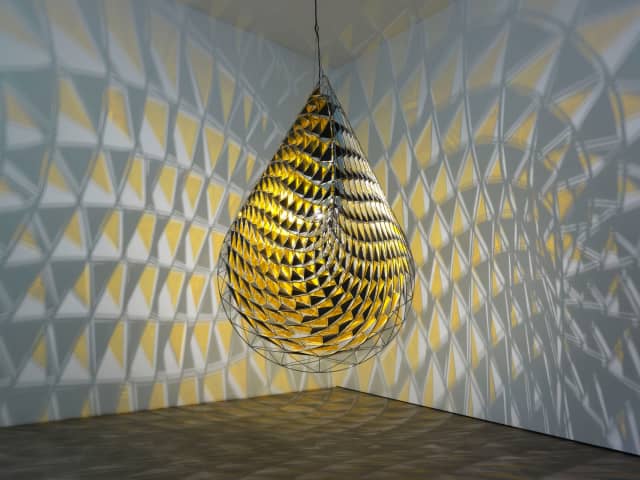Illuminated from within and suspended from the ceiling, the ambiguously curved edges and complex spiral frames of The new planet pattern the surroundings with a mesmerising combination of coloured light and shadow. The artwork is constructed in the shape of an oloid, a geometric form discovered in 1924 by scientist Paul Schatz; the shape’s form is conceived around two congruent circles, placed perpendicular to one another with the centre of each lying on the circumference of the other.
Two layers of curved, stainless steel rods fan out into frames that define the inner and outer surfaces of the oloid’s shell. Affixed in trios to connecting spans between the two frames are innumerable triangles of aluminium and of black and yellow glass. The static surface of the work appears to be a flurry of movement, a feature inspired by the mesmerising relationship between internal motion and external shape exhibited in flocking birds. Passing through the space around the work, visitors recognise their own movement in the constantly changing alignment of the elements on the oloid’s surface.
| Artwork details | |
Title |
The new planet |
Year |
2014 |
Materials |
Stainless steel, aluminium, coloured glass (yellow), paint (black, yellow), halogen bulb |





